Essential Insights on Wedding Cake Freezer Containers

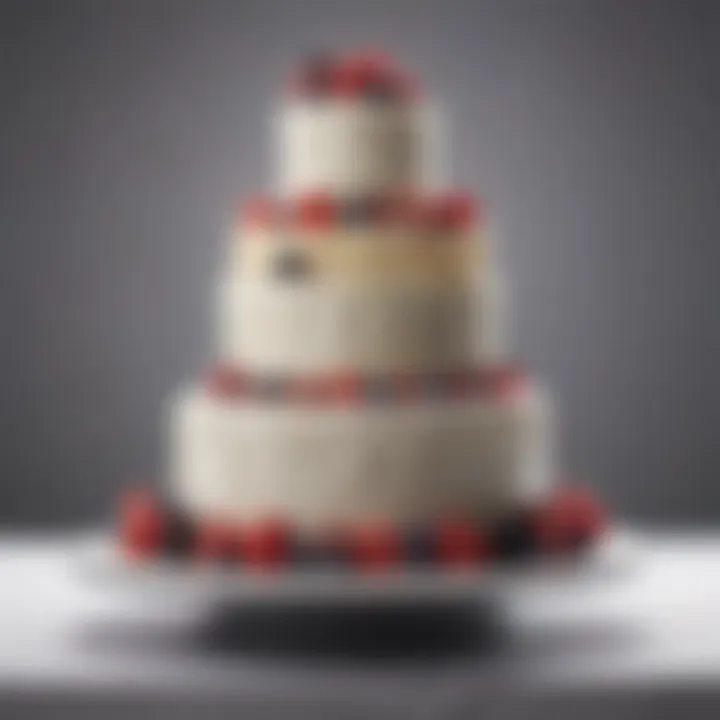
Intro
In the realm of wedding planning, every element holds significance—especially the cake. It is often regarded as not just dessert but a symbol of celebration and unity. However, the challenge arises when couples desire to save a piece of this confectionary masterpiece for future celebrations, such as anniversaries. This is where wedding cake freezer containers step in as a practical solution. Understanding these containers can elevate your cake preservation strategy, ensuring that your precious memories don't lose their charm over time.
Wedding cake freezer containers serve a specific purpose: to maintain the integrity of a cake post-wedding. This article explores the nuances of these containers, covering material choices, effective storage practices, and the art of preparing a cake for freezing. Moreover, insights into the sustainable options fo cake storage add depth to our discussion, aligning with contemporary values.
The right approach to cake preservation can enhance the taste and texture, which are key when indulging in a slice from the past. This provides an opportunity not just to relive a joyous occasion but to do so with flavor intact. Let’s delve deeper into the workings of wedding cake freezer containers.
Understanding the Importance of Cake Preservation
Preserving wedding cakes is not just a matter of maintaining taste and texture. It holds great sentimental value for many couples. Every slice of wedding cake can remind the couple of their special day and the love shared in that moment. Consequently, proper preservation techniques can enhance the experience of anniversaries or family gatherings by reviving those cherished memories.
One could argue that a wedding cake symbolizes commitment and love. As years pass, the cake becomes a part of family lore, often celebrated during significant milestones. Thus, the act of saving and enjoying the cake long after the ceremony contributes to its significance. Many couples wish to save the top tier of their wedding cake to enjoy on their first anniversary. This tradition transcends cultures and is often viewed as a way to bring luck, prosperity, and happiness to the marriage.
Moreover, preserving wedding cakes showcases the culinary skills of bakers. A well-made cake should ideally taste good even after being frozen for months. Therefore, understanding the techniques of cake preservation not only helps maintain flavor and texture but also honors the artistry involved in cake-making. By focusing on proper methods, couples can ensure their cake serves as a delicious reminder of their nuptials.
In summary, understanding the importance of cake preservation involves recognizing its emotional and cultural significance alongside the practical aspects of maintaining quality. This will be explored in greater detail throughout this article.
Significance of Preserving Wedding Cakes
The significance of preserving wedding cakes extends beyond simple nostalgia. For many couples, the top tier of the cake is a traditional item to save. This part of the cake is kept for future celebrations, marking the passing of time in their relationship. The act of serving this cake can be seen as a ritual, reaffirming the vows made during the wedding ceremony.
Properly preserved wedding cakes can evoke powerful memories and emotions years later. They can even serve as a conversation starter in future family gatherings. Knowing the story behind the cake and the significance of its preservation can enhance the emotional depths when savoring it together.
Furthermore, the flavors of the cake can remain intact for a considerable time if preserved effectively. Many couples find it rewarding to enjoy the same flavors that marked their wedding day, allowing them to relive their special moments. With a well-executed preservation plan, couples can ensure the cake retains its integrity over time, providing a delightful treat long after the wedding.
Cultural Practices Surrounding Cake Cutting and Saving
Wedding traditions vary widely across cultures, but one common thread is the cake cutting ceremony. This event holds significant importance, symbolizing the couple's first joint task as partners. In some cultures, the cake is a representation of fertility and prosperity. Therefore, its preservation can reflect a couple's ongoing commitment to their shared future.
After the cutting, many couples save at least a portion of their wedding cake for future enjoyment. This act can differ based on cultural norms. For instance, some may keep the top tier for the first anniversary, while others might save a slice for significant milestones, like a child's first birthday.
In summary, the cultural significance of cake cutting and saving demonstrates a deeper emotional connection that transcends the act itself. It ties individuals to their heritage and denotes shared values within families and communities. Understanding these practices can provide valuable insights into the importance of cake preservation beyond mere taste.
An Prolusion to Wedding Cake Freezer Containers
In any celebration, food often takes a central role, and wedding cakes are no different. The act of saving a slice of wedding cake for the first anniversary is a cherished tradition. However, proper preservation is essential to ensure that this cake remains enjoyable even a year later. This is where wedding cake freezer containers come into play. They are specifically designed to keep the cake fresh and flavorful for an extended period. This section will delve into the critical elements of these containers, their benefits, and the considerations involved in selecting one.
What is a Wedding Cake Freezer Container?
A wedding cake freezer container is a specialized storage solution designed to preserve a cake, particularly the top tier or a sentimental leftover from a wedding. Unlike ordinary containers, these are build to accommodate the size and delicacy of wedding cakes. They often come with features that ensure an airtight seal, providing a protective environment against freezer burn and moisture loss. The right container prevents ice crystals that compromise the texture and taste of the cake, ensuring that it can be enjoyed later, retaining as much of its original quality as possible.
Common Features of Wedding Cake Freezer Containers
When selecting a wedding cake freezer container, it is important to understand what features to look for. Here are some common characteristics:
- Airtight Sealing: A proper seal is crucial: it keeps air out and locks freshness in.
- Durability: Materials used should withstand low temperatures without becoming brittle.
- Size and Shape Flexibility: Containers should accommodate tiered cakes and varied shapes without deformation.
- Insulation Properties: Good insulation helps in maintaining an even temperature around the cake.
- Easy Handling: Containers should be easy to open and close, allowing for simple access to the cake when needed.
Choosing a container that incorporates these features can significantly impact the success of cake preservation.
Using a well-designed wedding cake freezer container can greatly improve the quality of your anniversary celebration, allowing you to relive those sweet moments year after year.
Material Options for Freezer Containers
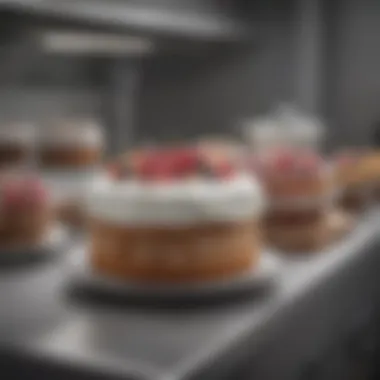
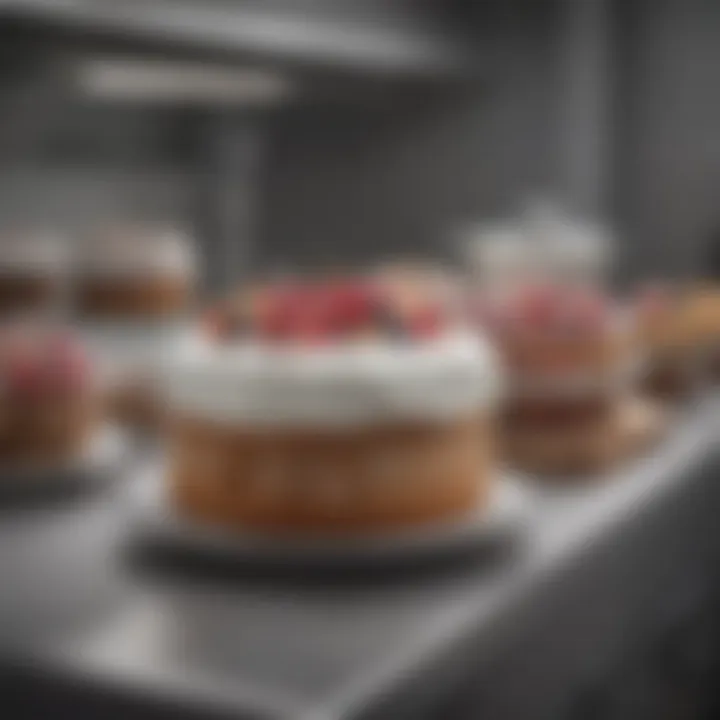
In the domain of cake preservation, the choice of material for freezer containers plays a crucial role. Different materials come with their unique properties that can significantly affect how well the cake is stored. Understanding these material options allows couples and cake enthusiasts to select an appropriate container that maximizes the quality and longevity of their treasured wedding cake. This section delves into the merits and drawbacks of various material types, providing insights not just on functionality, but also on aesthetic and environmental considerations.
Plastic Containers: Pros and Cons
Plastic containers are often favored for their lightweight and flexible nature. They are commonly designed with airtight lids that effectively prevent moisture loss and protect against freezer burn.
Pros:
- Affordability: Usually cheaper compared to glass or metal.
- Lightweight: Easy to handle and transport.
- Customization: Available in various sizes and shapes, offering options for different cake designs.
Cons:
- Durability: Prone to cracking or warping if not stored properly.
- Chemical Concerns: Some plastics may leach harmful chemicals over time, especially when exposed to extreme temperatures.
- Limited Aesthetics: Generally less visually appealing compared to glass or metal alternatives.
By weighing these pros and cons, one can determine if a plastic container is the right choice based on specific storage needs and preferences.
Glass Containers: Durability and Aesthetics
Glass containers offer an appealing combination of durability and elegance. They withstand cold temperatures remarkably well without compromising structural integrity, making them suitable for long-term storage.
Pros:
- Durability: Less likely to scratch and often more resistant to temperature changes than plastic.
- Non-Toxic: Glass is inert, ensuring no chemicals can leach into the cake.
- Aesthetic Appeal: Many glass containers come with beautiful designs that enhance presentation.
Cons:
- Weight: Heavier than plastic, making them less portable.
- Breakability: More prone to breakage if not handled carefully.
- Cost: Generally more expensive compared to plastic.
Opting for a glass container could be ideal for those who value aesthetics alongside functionality.
Metal Containers: Temperature Retention and Longevity
Metal containers, particularly those made from stainless steel, are known for their excellent temperature retention properties. They are less common for home use but can be effective in maintaining a cake's frozen state for longer.
Pros:
- Longevity: Highly durable and resistant to rust, a suitable choice for frequent freezing and thawing.
- Temperature Efficiency: Metal is excellent in insulating and keeping the cake at a consistent temperature.
- Eco-Friendly: Often made from recyclable materials, appealing to environmentally conscious consumers.
Cons:
- Weight: Heavier and sometimes bulkier than other options.
- Cost: Can be pricier than plastic or glass.
- Limited Transparency: You cannot easily see the contents without opening the container.
Understanding the unique characteristics of these materials empowers consumers to make an informed decision that aligns with their storage needs, personal style, and sustainability goals.
Selecting the Right Wedding Cake Freezer Container
Choosing the right wedding cake freezer container is crucial for preserving the integrity of a cake intended for future celebrations. This decision influences not only the freshness and taste but also the visual appeal when it is eventually served. A well-selected container can provide a protective barrier against freezer burn, moisture loss, and unwanted odors from the freezer environment. An effective freezing method can ensure the cake remains delicious, allowing couples to relive their special day years later.
When selecting a container, there are various factors to consider, including size, shape, insulation properties, and seal quality. Each of these elements plays a vital role in maintaining the cake’s texture and flavor.
Factors to Consider for Size and Shape
The size and shape of the freezer container can significantly affect how well the cake is preserved. Ideally, the container should accommodate the cake without causing any deformation. Factors to keep in mind include:
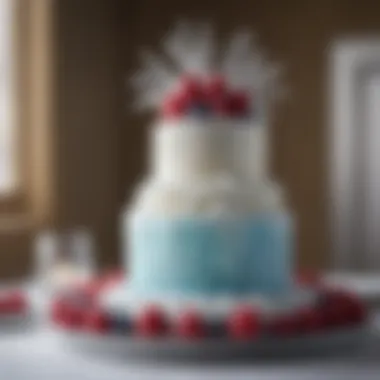
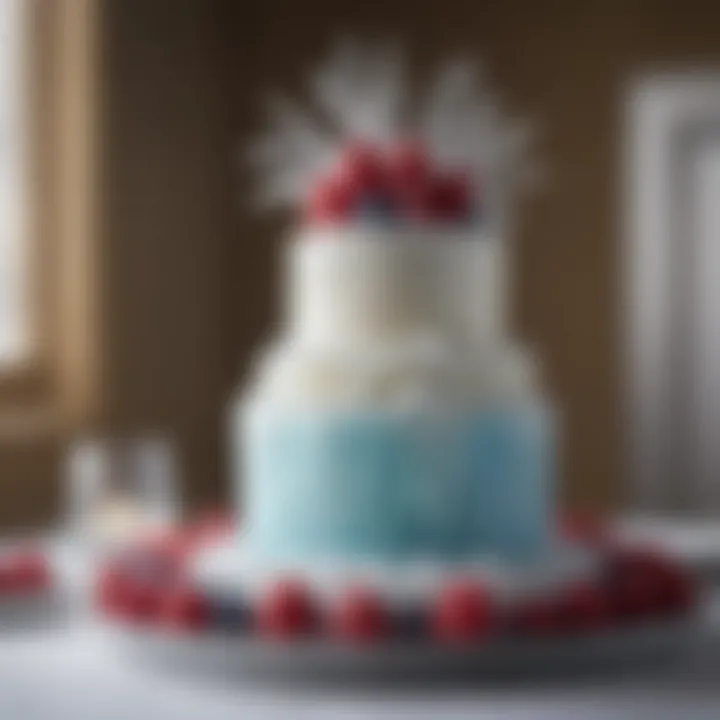
- Dimensions of the Cake: Measure the height and width of your wedding cake to select a container that offers a snug fit. This minimizes the movement during freezing and thawing, which can lead to damage.
- Type of Cake: A tiered cake may require a larger or specific shape container than a single-layer cake. Consider whether your cake has intricate decorations that may need extra space for protection.
- Stackability: If you plan to store several items in the freezer, consider choosing a container that can be stacked efficiently, utilizing space without compromising the cakes.
These considerations ensure the cake does not suffer from damage or spoilage, ultimately maintaining the quality for when it is defrosted.
Evaluating Insulation and Seal Quality
Another critical aspect of selecting a wedding cake freezer container is its insulation and seal quality. Proper insulation prevents temperature fluctuations that can damage the cake over time. Consider the following points:
- Material Insulation: Look for containers made from materials that provide excellent insulation. Containers with thicker walls tend to offer better insulation, maintaining a stable environment for the cake.
- Seal Quality: A tight-sealing lid is essential to keep air and moisture out. Inspect the sealing mechanism of the container; gaskets that fit snugly will create an airtight seal that protects against freezer burn. Any leaks can lead to severe spoilage over time.
- Ease of Use: Make sure the container is easy to close and open. A convoluted design may discourage usage, leading to improperly stored cakes.
"The right freezer container is not just a storage solution; it is essential for ensuring the cake remains a delicious memory, preserved for future celebrations."
By paying careful attention to size, shape, insulation, and seal quality, couples can ensure they are making an informed decision. This attention to detail can have a lasting impact on their memories and enjoyment of an important life event.
Preparation for Freezing the Wedding Cake
Preparation for freezing the wedding cake plays a vital role in ensuring that the cake retains its flavor and texture when defrosted. Proper preparation steps help to prevent freezer burn and maintain the integrity of the cake layers. This section delves into essential practices that should be followed for effective freezing, highlighting both the methods and their benefits.
How to Properly Frost and Wrap a Cake
When it comes to freezing a wedding cake, the frosting and wrapping process is crucial. Start by ensuring that the cake is completely cooled. A warm cake will create condensation, leading to unwanted moisture during freezing. Once cooled, apply a sturdy layer of frosting. This will not only enhance flavor, but it also serves as a barrier against air. A whipped buttercream or cream cheese frosting works well for this purpose.
After frosting, allow it to set for about 30 minutes before wrapping. Use plastic wrap or wax paper to encase the cake securely. Ensure every part is covered to reduce exposure to air. Follow up with aluminum foil for added protection. Double-wrapping the cake increases its preservation quality. If using multiple layers, wrap each layer separately. This prevents them from sticking together and allows easier defrosting.
Best Practices for Storing Cake Layers Separately
Storing cake layers separately can provide several advantages. This practice minimizes flavor transfer and preserves texture. When separating layers, ensure they are properly cooled first. Then, carefully wrap each layer as mentioned above, focusing on preventing air exposure. Store these wrapped layers in a high-quality freezer-safe container.
Label each layer with the date and type of cake to keep track of what you have. The ideal freezing duration typically ranges from two to six months. However, for best quality and flavor, use them within three months. If a wedding cake has multiple different flavors, storing them separately allows cake lovers to enjoy their favorite flavor with maximum freshness.
"Proper preparation is key to enjoying your wedding cake long after the big day."
The Freezing Process and Best Practices
The freezing process is critical when it comes to preserving the quality of a wedding cake. Proper freezing ensures that the cake retains its taste and texture over time. Understanding best practices for freezing helps prevent common issues like freezer burn or loss of moisture, which can greatly affect the overall experience when the cake is defrosted for a special occasion.
Optimal Freezing Time and Temperature Settings
To achieve the best results when freezing a wedding cake, it is essential to maintain proper time and temperature. The ideal freezing temperature is 0°F (-18°C) or lower. At this temperature, the cake can remain preserved for several months without compromising taste or texture.
Proper timing is also significant. It is advised to freeze the wedding cake as soon as possible after it has been properly wrapped and cooled. Ideally, a cake should not remain in the freezer for more than six months. Beyond this period, although it may still be consumable, the quality may begin to deteriorate. To maximize its lifespan, monitors the time carefully.
Understanding Ice Crystals and Their Impact on Texture
Ice crystals form when moisture from the cake freezes. If the freezing process is not managed correctly, larger ice crystals can develop. These larger crystals can puncture air cells in the cake, leading to a grainy texture upon thawing.
To minimize the formation of such ice crystals, quickly wrapping the cake in plastic wrap or aluminum foil is crucial. This rapid process reduces moisture loss and forms smaller ice crystals, which can help maintain the cake's original texture. If preserved correctly, the cake can remain delicious and moist even after thawing. Understanding this component of freezing is vital for anyone looking to enjoy their wedding cake long after the big day.
Key Takeaway: Freezing a wedding cake is more than just placing it in the freezer. It requires careful preparation, attention to temperature, and understanding how ice crystals form and their effect on texture. Following these best practices will ensure that your special cake retains its intended flavor and consistency.
Defrosting the Wedding Cake
Defrosting the wedding cake is a vital process for ensuring that the delicate flavors and textures are preserved after freezing. The way a cake is thawed can greatly influence its taste and overall quality. This section discusses various methods that can be employed to thaw a frozen cake effectively, along with the importance of moisture reintroduction once the thawing has occurred. Both aspects can enhance your experience during future celebrations.
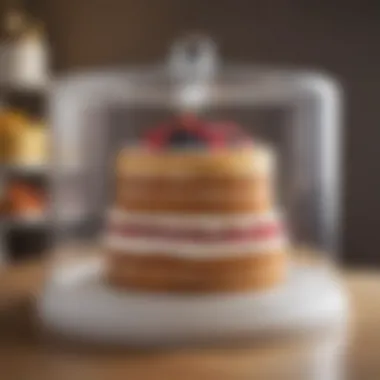
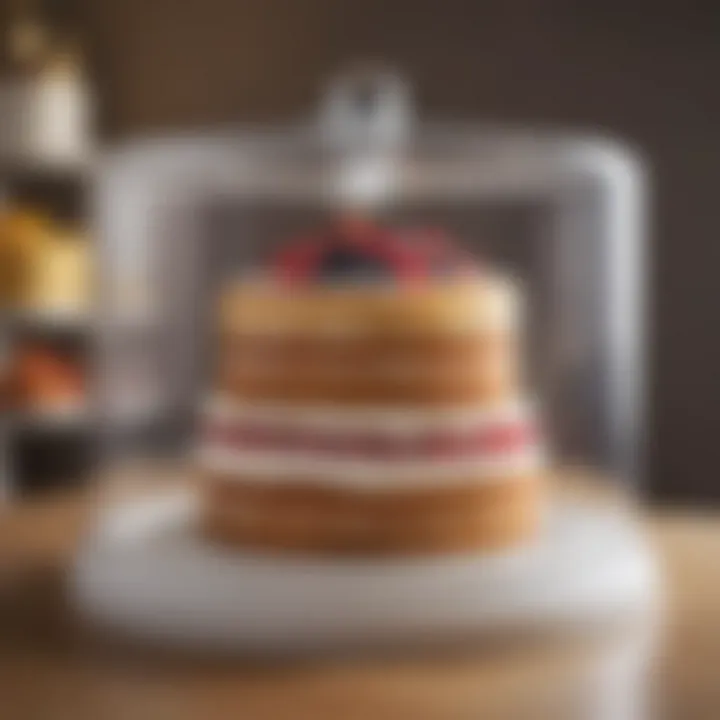
Best Methods for Thawing a Frozen Cake
When it is time to enjoy the cake again, proper thawing techniques should be used. Here are some recommended methods:
- Refrigerator Thawing: This is the most recommended method because it helps maintain the cake's texture. Place the cake in its freezer container in the refrigerator for several hours or overnight. Doing so allows the cake to thaw gradually, reducing the risk of sogginess.
- Room Temperature Thawing: If time is limited, you can thaw the cake at room temperature. Remove the cake from the freezer and leave it wrapped for about two to three hours. This method is faster but must be monitored closely to prevent moisture loss.
- Microwave Thawing: Although this method is not ideal, it can be used in emergencies. Set the microwave to defrost and ensure that you check the cake frequently. This can lead to uneven thawing and may negatively affect the texture.
Key Point: Always avoid placing a frozen cake directly into an oven or hot environment, as this can cause the cake to bake instead of thaw, ruining the intended flavor and consistency.
Choosing the appropriate method based on your time constraints and the specific cake type will lead to a more enjoyable experience.
Reintroducing Moisture After Freezing
Once the cake is thawed, the next task is to ensure it remains moist. Freezing can sometimes lead to dryness, so it's crucial to reintroduce moisture effectively. Here are several strategies:
- Simple Syrup Application: Before serving, lightly brush the surface of the cake with a simple syrup made from equal parts sugar and water. This adds sweetness and moisture back into the cake. Spraying a fine mist of syrup can help avoid oversaturating the cake.
- Frosting Layers: Applying fresh frosting also serves to seal in moisture while enhancing flavor. This is particularly effective for cakes that may have lost some of their original frosting during the freezing process.
- Fruit Purees: If appropriate for the cake flavor, consider applying fruit purees. These add a unique twist and can help revive the cake's moisture content, especially in fruit-flavored cakes.
- Covering: If possible, cover the cake with a clean towel or plastic wrap after thawing while it sits at room temperature. This helps trap any moisture that is naturally released during the thawing process.
Ensuring that the cake is not just thawed but also maintained in a rich, moist state will make the experience of revisiting this special dessert truly satisfying. Addressing the defrosting process with care ultimately contributes to the celebration it is meant to enhance.
Sustainability and Eco-Friendly Practices
The significance of sustainability and eco-friendly practices has become paramount in various spheres of life, including food preservation. Wedding cake freezer containers play a critical role in this context, as they not only preserve cherished memories but also can impact environmental health. Adopting sustainable practices in the selection and use of these containers can mitigate waste and promote more responsible consumption overall. The focus on eco-friendliness is vital for today’s conscientious consumer, who considers how their choices affect the planet and future generations.
Choosing Sustainable Materials for Containers
When selecting a wedding cake freezer container, the materials used are crucial for eco-friendliness. Opting for sustainable materials like bamboo, recycled plastics, or even bio-based compostable materials ensures that the environmental footprint is minimized. For example, containers made from recycled plastics help reduce waste in landfills and are excellent for maintaining cake quality. Similarly, glass containers, while heavier and more fragile, can be reused many times, making them an eco-friendly option in the long run.
In addition, it is essential to consider the manufacturing processes involved. Brands that prioritize sustainable methods, such as utilizing renewable energy sources during production or minimizing water waste, provide a more eco-conscious choice for consumers. Such practices not only help reduce the ecological impact but also resonate well with consumers who value social responsibility in brands they support.
Waste Reduction Strategies in Cake Preservation
Implementing effective waste reduction strategies in cake preservation is integral to an eco-friendly approach. Here are some practical tips to consider:
- Batch Preparation: Instead of making one large cake, it may be more efficient to create multiple smaller cakes. This practice can lead to less food waste, as smaller portions are often easier to consume or freeze.
- Smart Freezing: Utilize the freezer space wisely. Group items together in containers to make room for more cakes or food items. A well-organized freezer can help in managing food better, preventing spoilage.
- Composting Unwanted Portions: If there are any cake remnants that cannot be consumed, consider composting them. This measure reduces waste going to a landfill and contributes to soil health.
Through these strategies, the act of preserving a wedding cake can transition from a mere consideration of storage to an opportunity to embrace environmental stewardship.
"Emphasizing sustainability in cake preservation reflects a larger movement towards mindful consumption and environmental responsibility. This not only enhances the celebration but also ensures a healthier planet."
By adopting these eco-friendly practices, enthusiasts can enjoy their wedding cake flavors while making a distinct statement about their commitment to sustainability.
Epilogue
The conclusion of our exploration into wedding cake freezer containers serves as a critical synthesis of information gathered throughout this article. The importance of properly preserving a wedding cake cannot be overstated. It is not just about keeping a cake for a year but about cherishing memories tied to significant life events. A well-preserved cake can be enjoyed during anniversaries or special family gatherings, allowing these memories to resonate vibrantly.
Key elements to consider in cake preservation include choosing the right container, understanding how to prepare and freeze the cake effectively, and employing proper defrosting methods to retain flavor and texture. Each step in this process, from selecting a durable container to employing sustainable practices, plays a vital role in the overall success of preserving the cake.
In addition to the practical benefits of extending the life of the cake, the choice of materials and methods can reflect a commitment to eco-friendly practices, an aspect that increasingly resonates with conscientious consumers. By emphasizing sustainability, this article aligns with trends in contemporary food preservation, making it relevant for today’s readers who value both practicality and environmental responsibility.
Through a focused understanding of these practices, one can ensure that the wedding cake, a symbol of joy and celebration, continues to be a cherished part of life's milestones.
Summary of Key Takeaways
- Preserving wedding cakes can enhance the enjoyment of special moments such as anniversaries.
- The right freezer container is crucial for maintaining cake quality during storage.
- Proper preparation techniques, including wrapping and freezing processes, are essential.
- Eco-friendly practices in cake preservation resonate with sustainably minded individuals.
Future Trends in Cake Preservation
As food preservation continues to evolve, several trends are emerging in the realm of cake preservation.
- Innovative Materials: Manufacturers are increasingly exploring biodegradable and reusable materials for cake storage. This shift aims to reduce plastic waste while ensuring the integrity of the cake during freezing.
- Smart Storage Solutions: Integration of technology in food storage is on the rise. This could include containers with temperature monitoring features or apps that remind users when their cake is nearing its consumption date.
- Personalization in Design: Consumers are looking for containers that not only serve a functional purpose but also align with their personal aesthetics. Custom designs in freezer containers could become a popular choice.
- Emphasis on Health: With growing awareness of health and nutrition, there may be a shift towards minimizing preservatives and opting for all-natural ingredients in cake making and preservation.
These trends indicate a future where preserving wedding cakes and other celebratory foods is not only more effective but also aligns with broader movements towards sustainability and personal expression.







